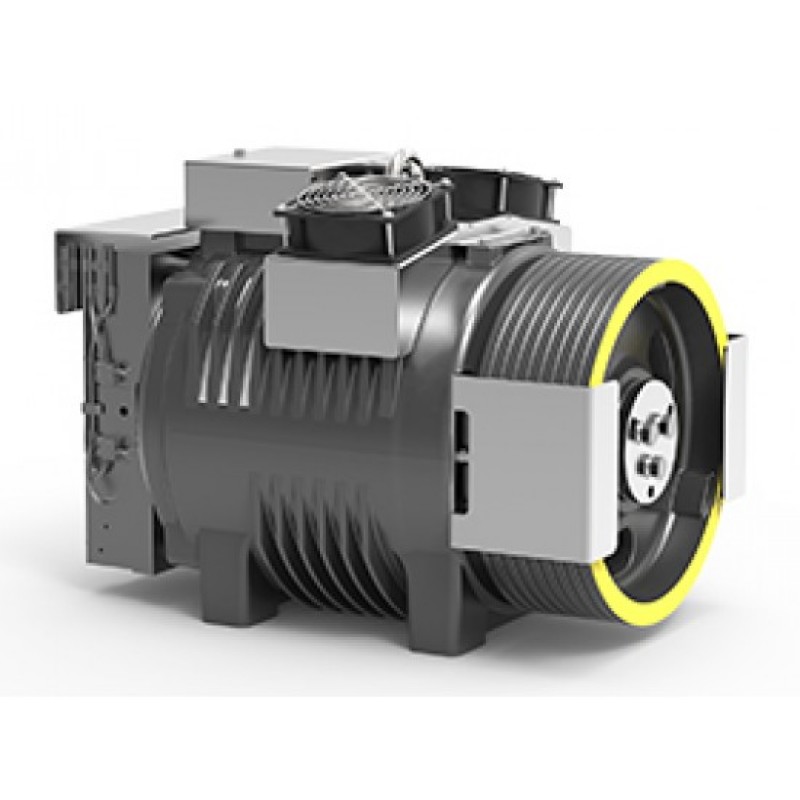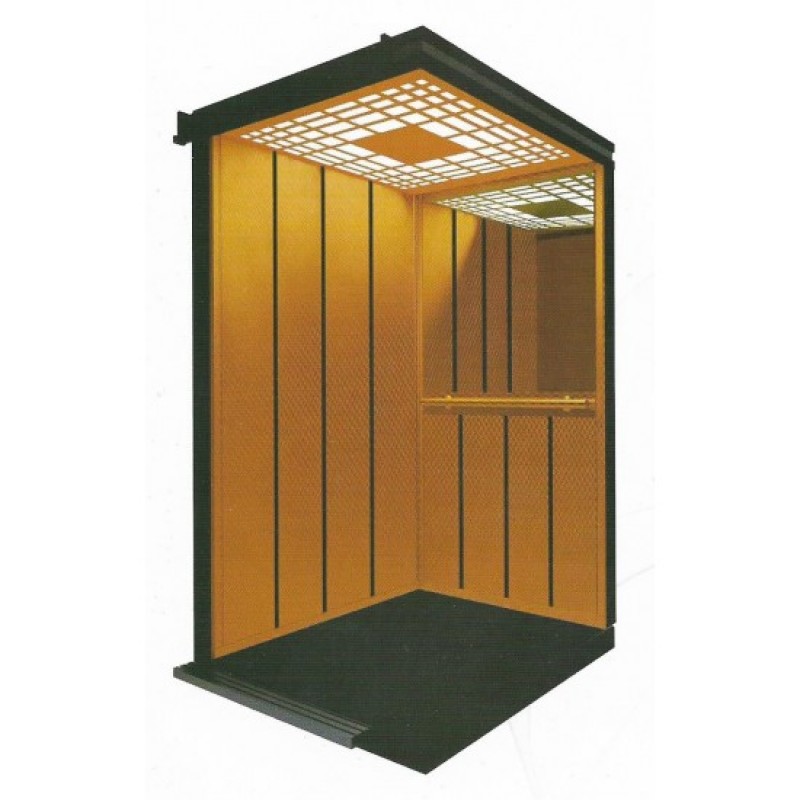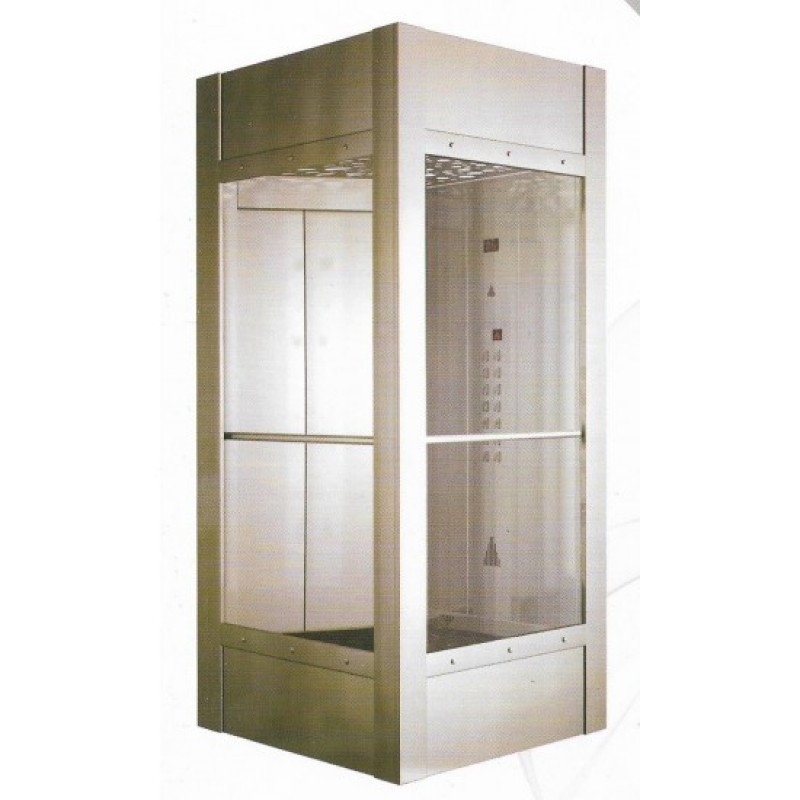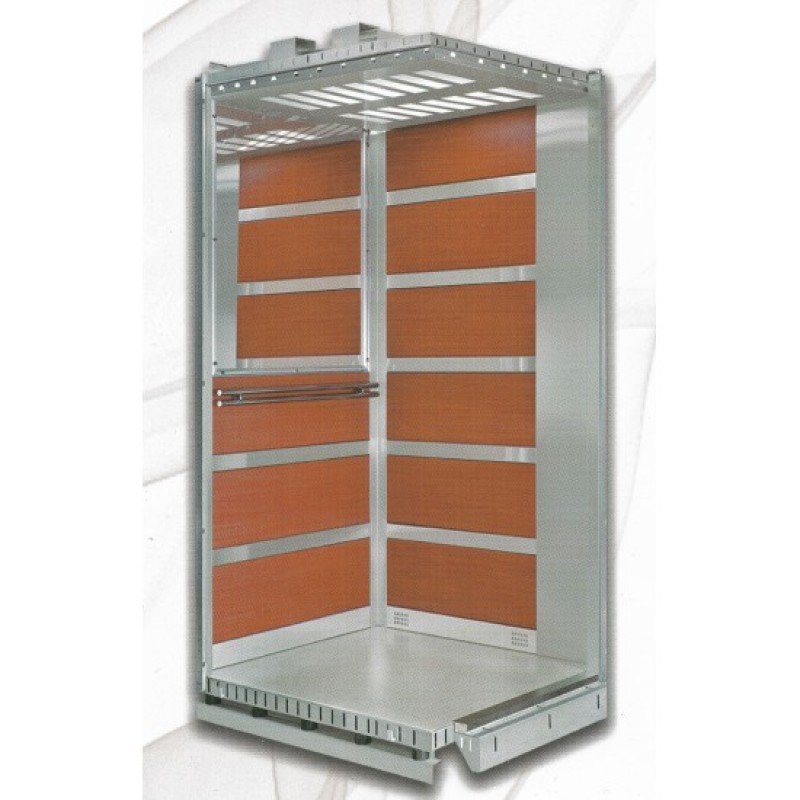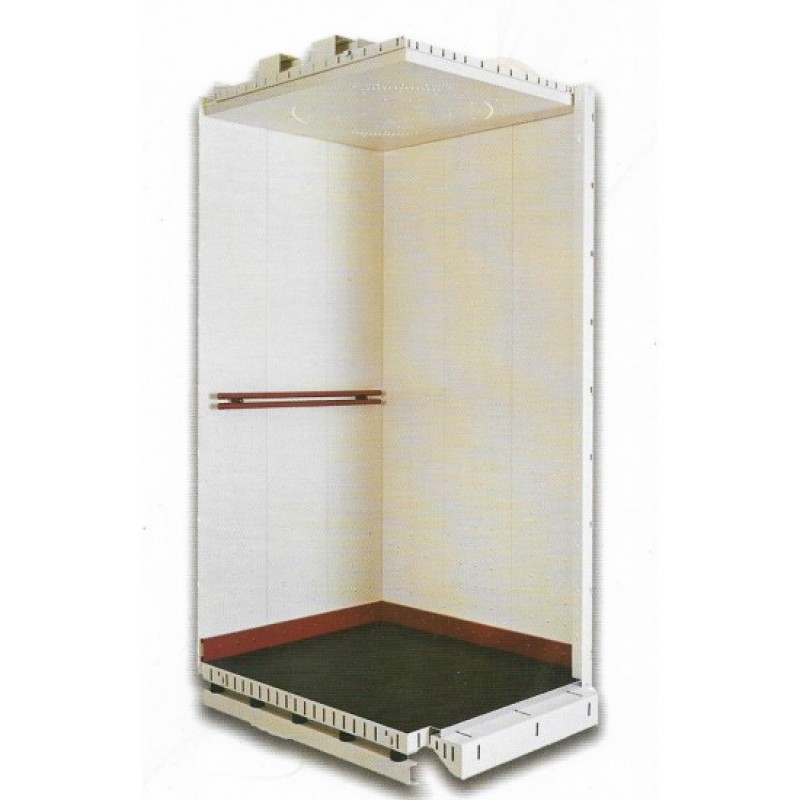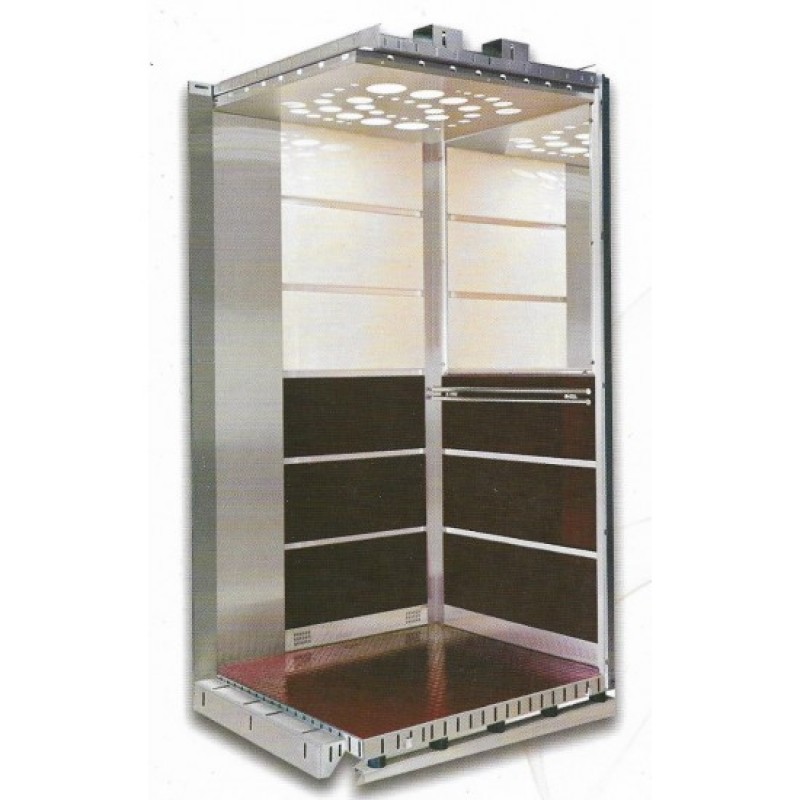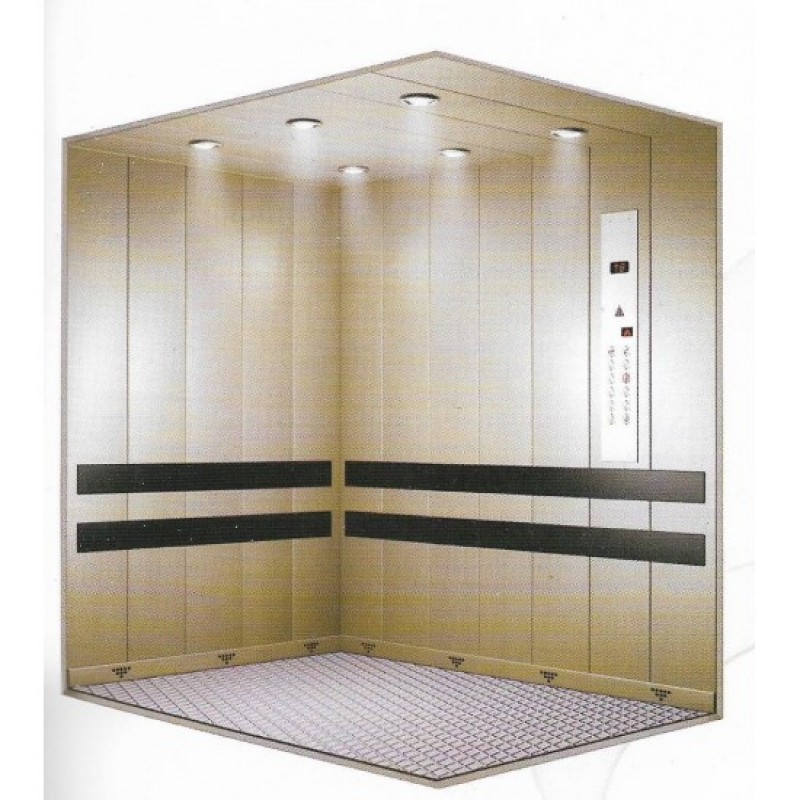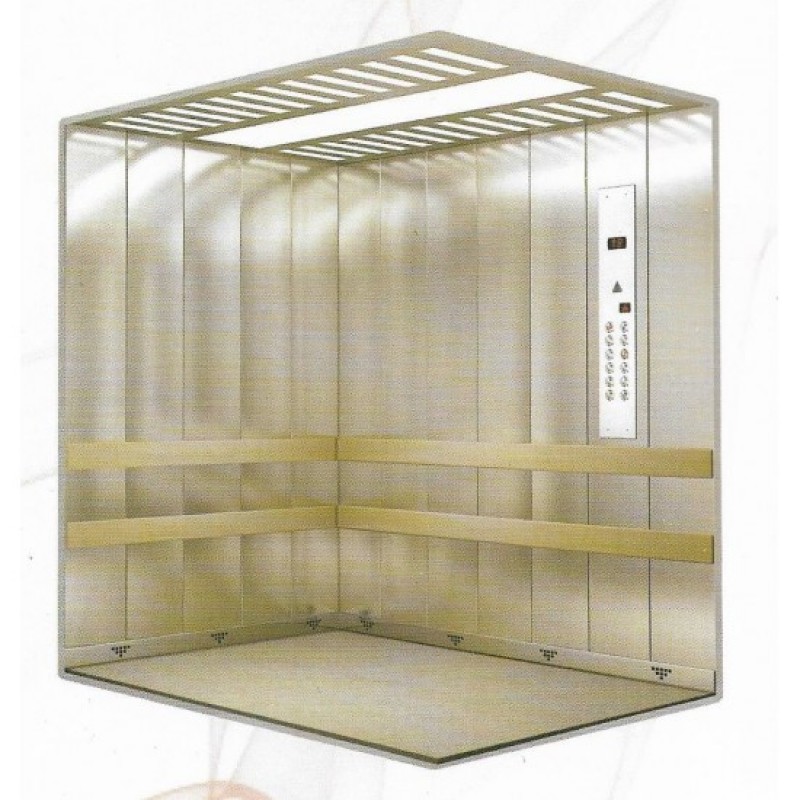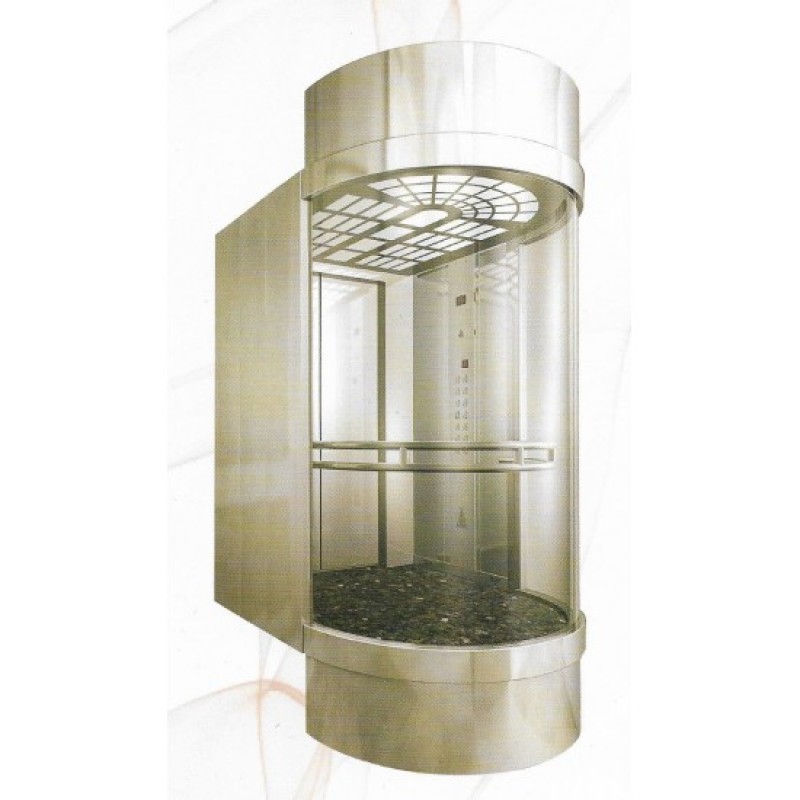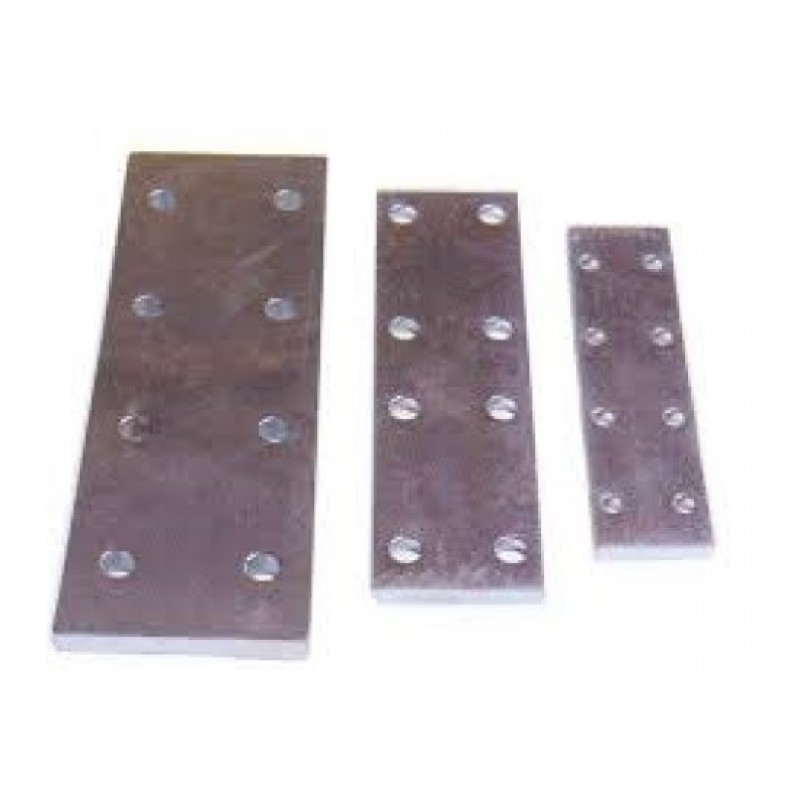
تسجيل الدخول أو إنشاء حساب
Closeالزبون العائد
أنا زبون عائد
تسجيل الدخول أو إنشاء حساب
Closeتسجيل حساب
إذا كان لديك بالفعل حساب معنا ، يرجى تسجيل الدخول على نموذج تسجيل الدخول.
لقد تم انشاء الحساب بنجاح !
شكراً على التسجيل في موقع Egyptlifts!
سيتم إعلامك عن طريق البريد الإلكتروني عندما يتم تفعيل حسابك من قبل فريق عمل الموقع.
إذا كانت لديك استفسارات عن نظام عمل الموقع، يرجى الاتصال بفريق عمل الموقع.
خروج
تم تسجيل خروجك من الحساب. يمكنك مغادرة الموقع بأمان
سلة التسوق الخاصة بك قد تم حفظها، الطلبات الموجودة في السلة سوف يتم استعادتها كلما قمت بتسجيل الدخول إلى حسابك.
كابينة المصعد

كابينة المصعد
.jpg)
في هذا المقال، سنستكشف عالم كابينة المصعد ونتعرف على تصميمها وأهميتها في
حياتنا المعاصرة. سنلقي نظرة على أجزاءها وتكنولوجياها وكيف تؤثر على تجربة
المستخدم والبيئة الحضرية. بدءًا من المعلومات الأساسية إلى التطورات المستقبلية.
تعريف كابينة المصعد
تعد كابينة المصعد هي الجزء الأساسي والظاهر للركاب في نظام مصاعد. إنها
الغرفة أو المقصورة المعدة خصيصًا لنقل الأشخاص والبضائع بين الأدوار المختلفة في
المباني العالية. تكون كابينة اسانسير عادة مصنوعة من مواد قوية مثل الصلب والزجاج
لضمان سلامة الركاب وتحمل الاستخدام المتكرر. (أسعار المصاعد في مصر بالضمان)
يتم تجهيز كابينة مصعد بأبواب تفتح وتغلق بشكل آمن للسماح بالدخول والخروج
من الأسانسير. هذه الغرفة الصغيرة تستند إلى تكنولوجيا متقدمة تشمل نظم السلامة
والتحكم الآلي لضمان تشغيلها بأمان وفعالية. (أسعار تركيب مصاعد بالتقسيط في مصر- هاي ليفت)
إن كابينة مصعد هي واجهة الركاب مع هذا الوسيلة الحضرية الحديثة التي تسهم بشكل كبير في تحقيق الراحة والوصول السريع في المباني ذات العديد من الأدوار. (أسعار قطع غيار مصاعد حلمية الزيتون)
أهمية كابينة المصعد
تعتبر كابينة مصعد ذات أهمية كبيرة في حياتنا اليومية وفي بنية المباني
الحضرية الحديثة. إليك فقرة تشرح أهميتها:
كابينة الاسناسير تعد جزءًا أساسيًا في تحقيق الوصول السريع والفعال داخل
المباني ذات العديد من الأدوار. توفر هذه الهياكل الصغيرة وسيلة موثوقة وآمنة لنقل
الأشخاص والبضائع بين الطوابق، مما يقلل من الحاجة إلى استخدام السلالم ويوفر
وسيلة مريحة للتنقل. (أسعار ماكينات مصاعد تركي- هاي ليفت)
بفضل كابينة الاسانسير، يمكن للأفراد الوصول إلى الأماكن العليا دون عناء، مما يسهم في توفير الوقت والجهد. وليس فقط ذلك، بل تلعب أيضًا دورًا مهمًا في تعزيز الإمكانيات الوظيفية للمباني التجارية والسكنية، حيث تزيد من قيمة العقار وتجعله أكثر جاذبية للسكان والمستأجرين. إنها تجمع بين الأمان والراحة والكفاءة في نفس الوقت، مما يجعلها عنصرًا لا غنى عنه في تصميم المباني الحديثة والمستدامة. (أسعار ماكينة مصعد مونتاري)
مكونات كابينة المصعد
كابينة مصعد تتألف من مجموعة من المكونات التي تعمل بتنسيق لتوفير تجربة آمنة وراحة للركاب. إليك فقرة تشرح بعض هذه المكونات: (أسعار مواتير المصاعد الإيطالية في مصر)
أحد أهم عناصر كابينة المصعد هو الجدران والأبواب. تُصمم جدران الكابينة عادة من مواد قوية مثل الصلب أو الزجاج المقوى لضمان السلامة والاستدامة. تكون الأبواب جزءًا حاسمًا من هذا التصميم، حيث يجب أن تكون مصممة بعناية لتفتح وتغلق بشكل آمن وسلس وتمنع دخول أو خروج أي شيء أثناء تشغيل المصعد. (أسعار مواتير المصاعد في مصر)
بالإضافة إلى ذلك، يشمل تصميم كابينة مصعد أيضًا الأرضية والسقف. تُصنع
الأرضية عادة من مواد مقاومة للتآكل والاهتراء لتحمل الاستخدام المتكرر وتكون آمنة
للركاب. السقف يحتوي على إضاءة وتهوية لضمان الراحة داخل الكابينة.
بالإضافة إلى ذلك، تحتوي كابينة المصعد على عدة مكونات أخرى مثل الأزرار والشاشات التي تُستخدم لاختيار الطابق المطلوب ومعرفة حالة المصعد. كما يتم تزويدها بأنظمة السلامة والتحكم الآلي لضمان تشغيلها بأمان وفعالية. (أسعار واير الأسانسير- متي يتم تغيير وايرات المصاعد)
إجمالاً، تعتبر مكونات كابينة مصعد عنصرًا أساسيًا في توفير تجربة نقل آمنة ومريحة للركاب، وتلعب دورًا حاسمًا في كفاءة وأداء المصعد. (أفضل سعر واير الأسانسير- هاي ليفت)
تصميم كابينة المصعد
تصميم كابينة مصعد يعتبر أمرًا مهمًا جدًا حيث يجمع بين العوامل الجمالية
والوظيفية. يتم مراعاة عدة عوامل أساسية عند تصميم كابينة المصعد لضمان تقديم
تجربة ركوب ممتازة وآمنة.
أولًا، يتم اختيار المواد بعناية لبناء جدران وأرضيات وسقف الكابينة. يفضل استخدام مواد متينة وسهلة التنظيف والصيانة مثل الفولاذ المقاوم للصدأ والزجاج المقوى لتحمل التآكل والاستخدام المتكرر. (أفضل شركات مصر مصر)
ثانيًا، يُعنى تصميم الإضاءة داخل الكابينة بأهمية كبيرة لتوفير رؤية جيدة وجو مريح للركاب. توجد الأضواء عادة في السقف والجدران بشكل استراتيجي لتوزيع الإضاءة بشكل متساوي. (أفضل نوع أسانسير للشراء)
كما يتم التفكير في توجيه الركاب وتوفير واجهة مستخدم سهلة الاستخدام داخل الكابينة. يتم تثبيت أزرار التحكم في الأدوار والأبواب بطريقة تسهل على الركاب استخدامها بكفاءة. (أنواع المصاعد- مقاسات المصاعد- مصاعد للبيع)
لا تقتصر التصميمات على العوامل الوظيفية فقط، بل يتم أيضًا مراعاة العناصر
الجمالية. يمكن تخصيص تصميم الكابينة بألوان وزخارف تناسب أسلوب المبنى أو العمارة
التي توجد فيها.
باختصار، تصميم كابينة المصعد هو مزيج متوازن بين الجمال والوظيفة، حيث يهدف إلى توفير تجربة ركوب مريحة وجذابة للركاب وفي نفس الوقت يضمن الأمان والكفاءة في استخدام المصعد. (أنواع شفرات الأسانسير- هاي ليفت)
الأمان والتكنولوجيا لكابينة المصعد
تكتسب التكنولوجيا دورًا حيويًا في تعزيز الأمان وتحسين أداء كابينة مصعد،
مما يجعلها وسيلة نقل آمنة وموثوقة. من خلال مراقبة وضبط مجموعة متنوعة من الجوانب
والمخاطر المحتملة، تتميز كابينة مصعد بأنظمة تكنولوجية متقدمة تشمل:
·
نظام الإغلاق
والاختبار: يتيح لركاب المصعد دخول والخروج بأمان من خلال نظام إغلاق وفتح
الأبواب. يتم أيضًا تنفيذ اختبارات دورية لضمان أن الأبواب تعمل بشكل صحيح وتفتح
وتغلق بسلاسة.
·
أنظمة التحكم
الآلي: تُستخدم أنظمة التحكم الآلي للتأكد من تحرك الكابينة بأمان بين الأدوار
ووقفها في المستوى المطلوب. تعمل هذه الأنظمة على تجنب أي حوادث أثناء النقل.
·
أجهزة استشعار
السلامة: تتضمن كابينة المصعد أجهزة استشعار تلمس أي عوائق في مسارها، مما يمنع
سحق أو تقطيع الأشياء أثناء الحركة.
·
الاتصالات
الطارئة: تحتوي كابينة مصعد عادة على وسائل اتصال طارئة مثل أزرار الاستدعاء
والتحكم في الحالات الطارئة للاتصال بمركز الطوارئ في حالة الحاجة.
·
تقنيات التحكم
بالوصول: يتم توفير تقنيات التحكم بالوصول في بعض الحالات لضمان أن الكابينة تعمل
فقط من قبل أشخاص معينين وفي أوقات معينة.
بفضل هذه التكنولوجيا والأنظمة الدقيقة، يمكن لكابينة مصعد تقديم تجربة نقل
آمنة وفعالة للركاب، وتقليل المخاطر إلى الحد الأدنى. تلعب هذه التقنيات دورًا
حاسمًا في تحقيق الأمان والراحة في استخدام المصعد في المباني الحديثة.
صيانة كابينة المصعد
صيانة كابينة مصعد هي عملية حيوية لضمان سلامة وأداء ممتاز لهذا الوسيلة
الحضرية الحيوية. يتطلب الحفاظ على كابينة المصعد في حالة جيدة اهتمامًا دوريًا
ومتخصصًا من قبل فرق الصيانة المؤهلة. يتضمن العمل الصياني عدة جوانب مهمة، بما في
ذلك:
·
فحص دوري: يجب
أن يتم فحص كابينة مصعد بانتظام للتأكد من عمل جميع الأجزاء بشكل صحيح. يتضمن ذلك
فحص الأبواب والمصاعد وأنظمة التحكم وأجهزة السلامة.
·
صيانة الأبواب
والمصاعد: تحتاج الأبواب إلى فحص دوري للتأكد من عدم وجود تلف أو عوائق تمنعها من
الفتح والإغلاق بشكل صحيح. كما يتعين صيانة المصاعد نفسها بما في ذلك المكونات
الميكانيكية والكهربائية.
·
تنظيف وصيانة
المواد: يجب تنظيف وصيانة الأرضيات والجدران والسقف بانتظام للحفاظ على المظهر
الجيد ومنع التلف والتآكل.
·
اختبارات
السلامة: يجب أن تُجرى اختبارات السلامة بانتظام لضمان أن جميع الأجزاء والأنظمة
تعمل بشكل صحيح، بما في ذلك نظام الإغلاق وأجهزة الاستشعار وأنظمة الإنذار.
·
تحديثات
التكنولوجيا: من الممكن أيضًا تحديث تكنولوجيا كابينة مصعد لتضمن أنها تستفيد من
أحدث التقنيات في مجال السلامة والكفاءة.
باستمرارية هذه الصيانة الدورية، يمكن تحقيق أقصى قدر من الأمان والأداء
الموثوق به لكابينة مصعد، وهو أمر ضروري لضمان تجربة ركوب آمنة ومريحة للركاب.
الاستدامة وكابينة المصعد
تأتي الاستدامة عاليًا على قائمة الأولويات في التصميم وصيانة كابينة مصعد
في العصر الحديث. فهي ليست مجرد مسألة عن تحقيق الكفاءة في استهلاك الطاقة، بل
تتعلق أيضًا بتقليل تأثيراتها البيئية وزيادة عمر الخدمة للمصاعد. تلعب كابينة
المصعد دورًا هامًا في تحقيق هذه الأهداف:
·
توفير الطاقة:
تقنيات التوفير في استهلاك الطاقة تسهم بشكل كبير في تقليل البصمة البيئية لكابينة
مصعد. ذلك يتضمن استخدام أنظمة إضاءة LED عالية الكفاءة
وأجهزة تكييف الهواء التي تعمل بكفاءة.
· مواد مستدامة: اختيار المواد المستدامة في تصميم كابينة مصعد يمكن أن يقلل من التأثير على البيئة. تستخدم مواد قابلة لإعادة التدوير ومستدامة في بناء الجدران والأرضيات والأسقف.
تحميل الماكينة SICOR 9 كيلوواط 1000
$150.00
$340.00
تحميل الماكينة SICOR 9 كيلوواط 1000 إذا كنت تبحث عن محرك مصعد بقوة 9 كيلوواط، يمكنك البحث عن محركات المصاعد بتلك القدرة من مختلف الشركات المتخصصة في صناعة المصاعد وتجهيزاتها.إليك الخطوات التي يمكنك اتخاذها لشراء محرك المصعد المناسب:البحث عبر الإ..
خزانة المصعد- OT07
$150.00
$320.00
خزانة المصعد- OT07 "OT07" قد تشير إلى نوع معين من خزانات المصاعد. ولكن يجب أن تعلم أن الرموز والتعليمات المحددة قد تختلف باختلاف الشركات المصنعة والمعايير الفنية المحددة لكل نظام مصعد. لفهم ما هي "OT07" في سياق خزانة المصعد، يفضل مراجعة الوثائق ..
خزانة بانوراما للمصعد- OTP101
$220.00
الجدار الجانبي: الفولاذ المقاوم للصدأ شعري الزجاج· إكسسوارات شعري من الفولاذ المقاوم للصدأ.الأرضية: جرانيت خاص.· تركيب الكابينة بشكل سريع وسهل.أماكن الإضاءة والتهوية.السقف: ستنلس ستيل. ليفت – أسانسير- اسانسير ..
OT02 كابينة مصعد ركاب
$20.00
· الجوانب من الصاج سمك 1.25 مم· الكابينة من الخشب الأفقي· قوائم من الاستانليس المصنفر· ..
OT03 كابينة مصعد ركاب
$20.00
· الجوانب من الصاج سمك 1.25 مم· الكابينة من الاستانليس المصنفر واللميع· قوائم أفقية من الفايبر أو الزجاج..
OT04 كابينة مصعد ركاب
$23.00
· الجوانب من الصاج المشكل المدهون الكتروستاتيك سمك 2 مم· ركنيات مربعة· اكسسوارات من الصاج المدهون· ..
OT05 كابينة مصعد ركاب
$20.00
· الجوانب من الصاج سمك 1.25 مم· الكابينة من الخشب الأفقي واللميع· قوائم من الاستانليس المصنفر· &nb..
OTG1001 كابينة مصعد بضاعة
$39.00
· الجوانب من الصاج سمك 2مم· مصدات أفقية من الصاج سمك 3 مم· حوائط وأرضيات بدهان اليكتروستاتيك· ..
OTG1002 كابينة مصعد بضاعة
$39.00
· الجوانب من الصاج سمك 2مم· مصدات خشبية أفقية· ركنيات مربعة· &nbs..
OTP102 كابينة مصعد بانوراما
$34.00
· الواجهة الأمامية من الزجاج الدائري والاستانلس المصنفر· الاكسسوارات من الاستانلس· تصنيع حسب المقاسات المطلوب..
بالتة كابينة 4 مم
$25.00
بالتة كابينة 4 مم يبدو أنك تبحث عن بالتة (زجاج) لكابينة المصعد بسمك 4 مم. الزجاج هو مادة شفافة ومتينة تستخدم بشكل شائع في تصميم وتركيب كابينات المصاعد لإضافة جمالية ومظهر عصري. لشراء بالتة زجاجية سمك 4 مم لكابينة المصعد، يمكنك متابعة الخطوات الت..
بالتة كابينة 5 مم
$35.00
بالتة كابينة 5 مم لشراء بالتة (زجاج) سمك 5 مم لكابينة المصعد، يمكنك متابعة الخطوات التالية:التواصل مع موردي الزجاج:اتصل بموردي الزجاج واطلب معلومات حول توفر الزجاج بالمواصفات التي تبحث عنها (سمك 5 مم).تحديد المواصفات بدقة:حدد مواصفات الزجاج بشكل..

